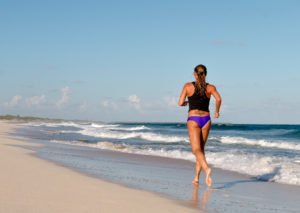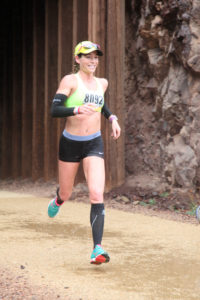 Virtual races have gone from a novel idea to essentially the only race option for many of us during the pandemic. Many runners are missing the ritual of training for a race – the build up, focus, and goal – and then race morning – toeing the line with other athlete, ready to put all that fitness to the test. While in-person races are rare these days, and not without risk, race directors and organizations are offering virtual races to help keep their finances afloat, while offering an alternative to runners desperately looking for one.
Virtual races have gone from a novel idea to essentially the only race option for many of us during the pandemic. Many runners are missing the ritual of training for a race – the build up, focus, and goal – and then race morning – toeing the line with other athlete, ready to put all that fitness to the test. While in-person races are rare these days, and not without risk, race directors and organizations are offering virtual races to help keep their finances afloat, while offering an alternative to runners desperately looking for one.
There are some major pros and cons to this new virtual boom, and both should be considered.
 Before you decide to be a “streaker,” pause for a hot second and ask yourself WHY? This time of year, running streaks are very popular. It makes sense. It’s getting colder, its often dark, peak goals are in the past, and runners are looking for motivation or accountability to be active. Toss in social media, and most runners will decide to commit to a streak without a second thought.
Before you decide to be a “streaker,” pause for a hot second and ask yourself WHY? This time of year, running streaks are very popular. It makes sense. It’s getting colder, its often dark, peak goals are in the past, and runners are looking for motivation or accountability to be active. Toss in social media, and most runners will decide to commit to a streak without a second thought.

 Now, here’s the thing: there’s absolutely no way I could run a 1:21 Half Marathon on a course with less hills. No two courses are created equal. This course handed me that time. I’m not saying I didn’t work for it, but that time would not translate the same to say NYC Half Marathon. My guess is that same performance would give me more of a 1:24-1:25. But that’s why it’s important to choose your races wisely. What’s your objective? What is your ace? Your weakness? I don’t need crowds and tons of people on the course to run well. Others do. I know how to run hills perhaps better than flat courses. Others don’t. You are different from the next runner. Learn what works for you.
Now, here’s the thing: there’s absolutely no way I could run a 1:21 Half Marathon on a course with less hills. No two courses are created equal. This course handed me that time. I’m not saying I didn’t work for it, but that time would not translate the same to say NYC Half Marathon. My guess is that same performance would give me more of a 1:24-1:25. But that’s why it’s important to choose your races wisely. What’s your objective? What is your ace? Your weakness? I don’t need crowds and tons of people on the course to run well. Others do. I know how to run hills perhaps better than flat courses. Others don’t. You are different from the next runner. Learn what works for you. Every once and a while I get a request for a blog topic. Today I am indulging myself to fulfill a recent request. One of my regulars at
Every once and a while I get a request for a blog topic. Today I am indulging myself to fulfill a recent request. One of my regulars at  It’s the time of year when runners signing up and tackling Autumn half marathons and marathons are thinking about their training and goals. It’s an exciting time. The impossible could become possible. Minds and bodies are fresh. You are likely pumped and ready to dive into training!
It’s the time of year when runners signing up and tackling Autumn half marathons and marathons are thinking about their training and goals. It’s an exciting time. The impossible could become possible. Minds and bodies are fresh. You are likely pumped and ready to dive into training!


